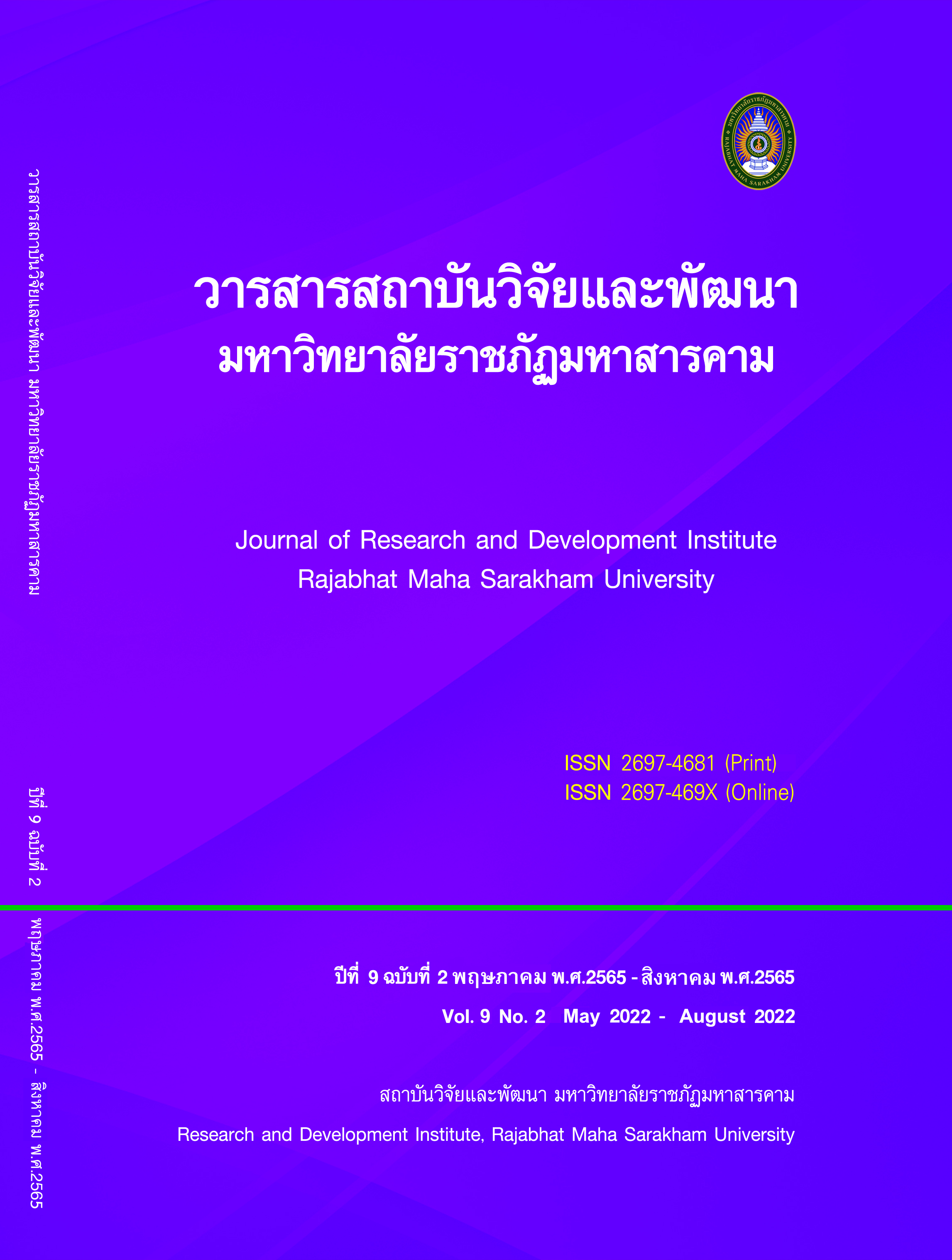Development of a digital literacy scale for high school students
Keywords:
Digital Literacy Indicators, High School Students, Exploration Factor AnalysisAbstract
This research aimed to; 1) Analyze and synthesize the digital literacy scales for high school students. 2) Build and quantify the digital literacy Indicators for high school students. 3) Check the quality of the digital literacy Indicators for high school students. and 4) Create Norm score of digital literacy Indicators for high school students. The samples were 620 high school student in Secondary Education Office Service Area 27. Tools for data collection were Indicator presentation interview form, Indicator suitability and feasibility questionnaire, and a multiple choice digital literacy Indicators. Statistics used were percentage mean ( ) standard deviation (S.D.) KR-20, Confirmatory Factor Analysis : CFA), percentile, and T-score.
Major results of the study;
1) 4 of consist components of indicators measure the digital literacy indicators for high school students were : Accessibility, Analytical Ability, Assessment Ability, and Creative Abilities.
2) The digital literacy Indicators for high school students was 30-item, 4-choice, multiple choice measure, Consistency from 0.60 -1.00, Disciminant index between 1.03-4.77 and the reliability value was 0.984.
3) The examine a construct validity were based on theory of responses to three exam methods under the simulation study by Rudner's method. The difficulty (b) ranged from -2.243 to 2.284, mean values were 0.074, and their chances of guessing correctly (c) ranged from 0 to 0, with all questions consistent with the model (2) situation 2 data (29_2PL10) found that this test had a power of discrimination (a) in the range of -2.085 to 2.178, the mean was 0.7691, the difficulty (b) was in the range of -0.514 to 2.747, and the mean. was 0.6402, and the probability of guessing test correctly (c) was in the range of 0 to 0, with all questions consistent with model, and (3) the simulation results of the 3rd scenario (29_3PL10) found that this test was worth distinguishing power (a) ranges from -0.434 to 1.464 and averages 0.751, difficulty (b) ranges from -1.394 to 1.462 and averages 0.2000, and chances of guessing correctly (c) within range. -1.606 to 1.594 and mean 0.3618, with all questions consistent with model.
4) Overall of secondary school students had a very high level of digital literacy (64.70%).
References
Ashton and Lee (2009). The HEXACO–60: A Short Measure of the Major Dimensions of Personality. Journal of Personality Assessment. 91(4), 340-345.
Chansilp, C. (2019). The impact of social media on the mental health of youth. academic conference "Northern Psychiatrist" for the year 2019 during 7-8 December 2019 at Novotel Chiang Mai Nimman Journey Hub.
Costa, P. T., & McCrae, R. R. (1992). NEO PI-R Professional Manual. Odessa: Psychological Assessment Resources.
Kanchanawasee, S. (2015). Subjective exams: creation, analysis and multiple-choice examination. The Social Science Research Association of Thailand. 2(3), 17
Kruthasen, A. (2013). Guidelines for developing the learning process to keep up with the media of youth leaders. Bangkok : Suan Dusit Rajabhat University.
Leo Babauta. (2009). The Power of Less The Fine Art of Limiting Yourself to the Essential…in Business and in Life. [Online] http://read.superebook.org /pdf/?book=1401309704 [12 June 2020]
Martin, A., &Grudziecki, J. (2006) .DigEuLit: Concepts and Tools for Digital Literacy Development. ITALICS: Innovations In Teaching & Learning In Information & Computer Sciences, 5(4), 246-264
Newman, B.L. (2012). Defining digital literacy. [Online] http://www.districtdispatch.org/ 2012/04/defining-digital-literacy [26 January 2020]
Nuansri, M. (2016). Development of Normative Criteria for Volunteer Spirituality Scale of Rajabhat University Teachers' Students. Journal of graduate studies Valaya Alongkorn Rajabhat University. (13), 122-135.
Pintuwachiraporn, W. (2014). Do less to get more. Bangkok : We Learn.
Saeton, T & MorSorn, T. (2016). Digital Literacy: Definition, Composition, and Current Situation. Journal of Information Science. 34(4),116-145.
Schumacker and Lomax (2016). A Beginner's Guide to Structural Equation Modeling 4th Edition. Routledge.
Suksawang, P. & Makmee, P. (2019). Developing a Basic Personality Scale for High School Students. Journal of Educational Measurement Mahasarakham University. 25(2), 180-192.
Wilson, M., & Sloane, K. (2000). From principles to practice: An embedded assessment system. Applied Measurement in Education, 13(2), 181-208.
Wiwatpanich, N. (2015). Developing Social Media Literacy Skills. Journal of graduate studies Valaya Alongkorn Rajabhat University. 9(3), 209-219.
Wonganannon, P. (2014). Children's and youth's Internet use behavior. Journal of The Royal Thai Army Nurses. 15(2), 173 - 178.
Worakham, P.. (2016). Educational Research. (8th ed). Maha Sarakham: Taxila printing.
Downloads
Published
How to Cite
Issue
Section
License
Copyright (c) 2022 Journal of Research and Development Institute Rajabhat Maha Sarakham University

This work is licensed under a Creative Commons Attribution-NonCommercial-NoDerivatives 4.0 International License.
Articles that are published are copyrighted by the authors of the articles







